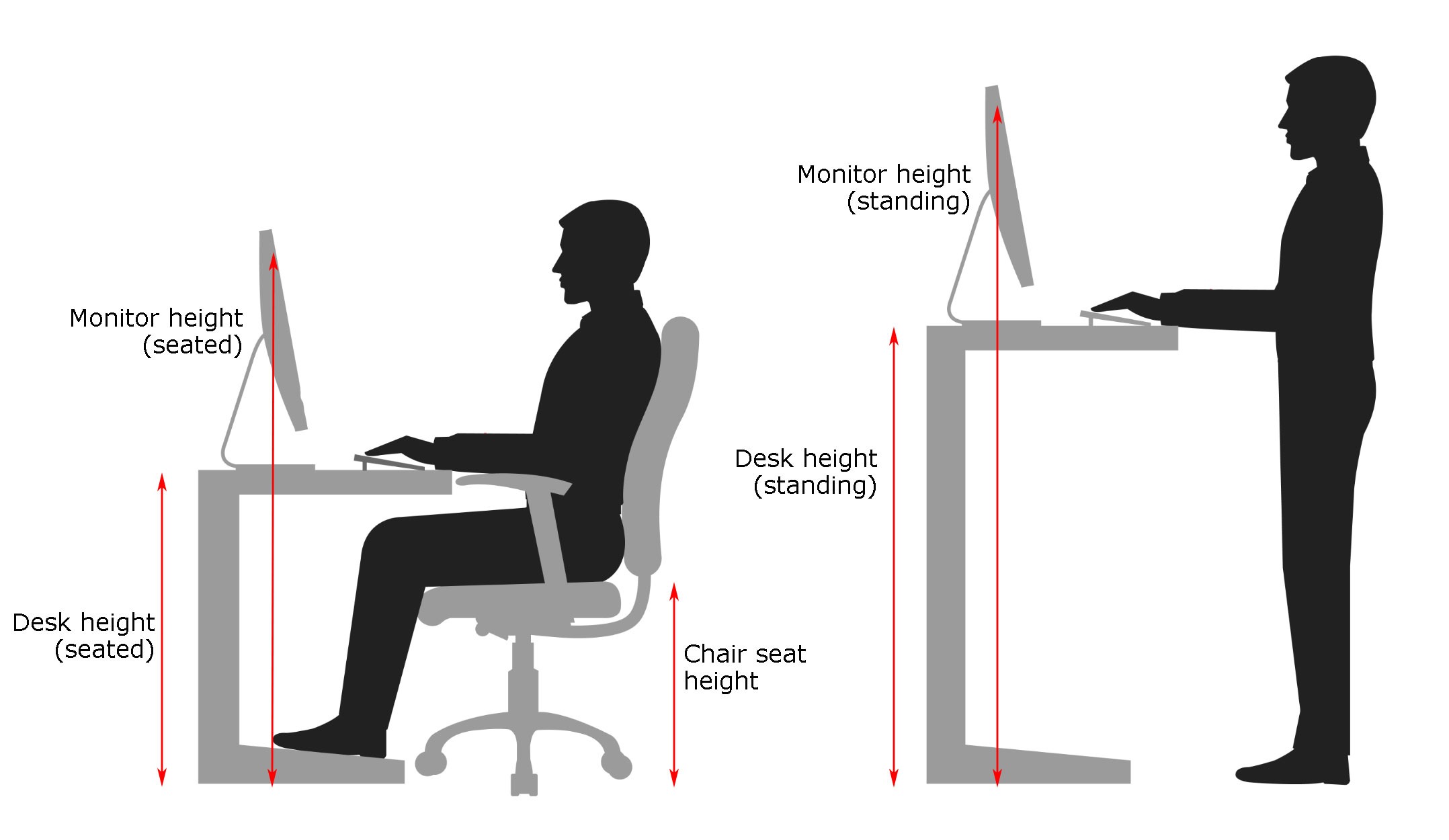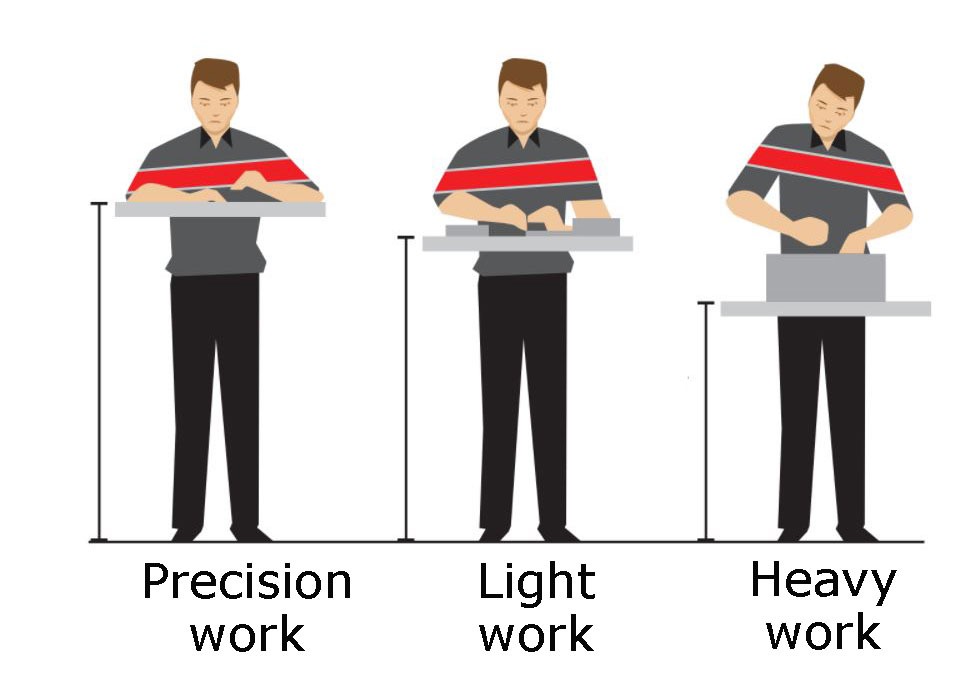- Your cart is empty
- Continue Shopping
What is an Ergonomic Chair?
According to Ergonomic Trends, “an Ergonomic Chair is one that not only follows best practices in terms of proven ergonomic
We are often asked….“what is the correct ergonomic height setting for my office chair and desk?” The answer is not that simple because it depends on two main factors, namely your height, and the type of work that you do. Because every person and their job environment is unique, the correct height for your desk, monitor and office chair will fall within a range of values as shown in our ergonomic chair height calculator. Ultimate Ergonomic Chair Guidelines For Healthy Sitting
If you work at a desk doing ‘normal’ or ‘standard’ office work like writing or working on a computer, then the following guidelines are applicable for setting the correct ergonomic height for your office chair, desk and monitor. What is an ergonomic chair?

Whether you are standing or sitting, adjust the desk, office chair and monitor so that it is at a comfortable ergonomic height. Find out whether it is good to alternate between sitting and standing at work.
Every person is unique and the height ranges shown in the table below should serve as a starting point.
If you do non-office work at a desk or workstation, then the above height ranges may not apply. For example, precision assembly or laboratory work typically requires a higher work surface, and heavy assembly a lower one.

Move the chair AWAY FROM THE DESK.
Now (and only now), move the chair towards the desk.
Release the synchronous or free-float mechanism and tilt fully backwards in the chair to increase the angle between your thighs and torso. By changing this angle, you automatically stimulate, or activate numerous muscles in your lower back, core and legs. As a result, the blood flow through these muscles increases, bringing oxygen and other nutrients to the muscles and carrying away the waste products of muscle metabolism. By doing so, muscle fatigue and it’s associated pain is reduced, particularly in the lower back. This is known as Dynamic Sitting.
Contact our Ergonomic Risk Facilitators who will gladly assist you in setting the correct height for your office chair, desk and monitor.
According to Ergonomic Trends, “an Ergonomic Chair is one that not only follows best practices in terms of proven ergonomic
What is an orthopedic office chair and how does if differ from an ergonomic chair? Which is best for chronic lower back pain?
Office chairs have an array of levers and knobs to adjust the backrest, seat and armrests. How do you achieve a healthy sitting posture?